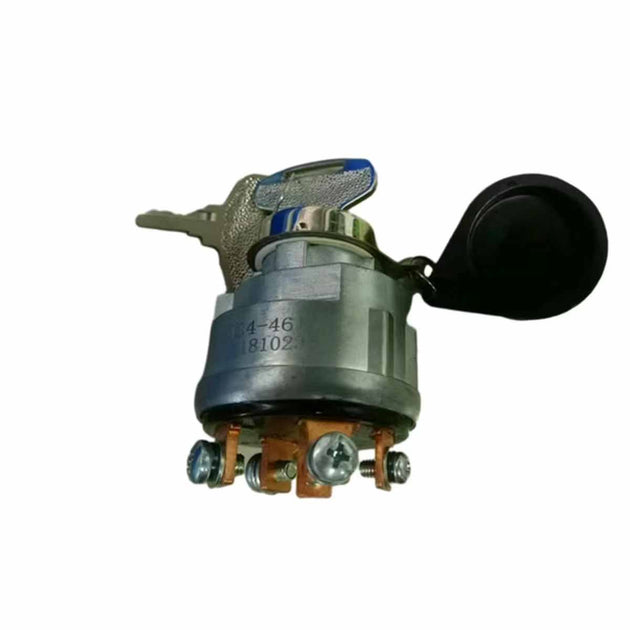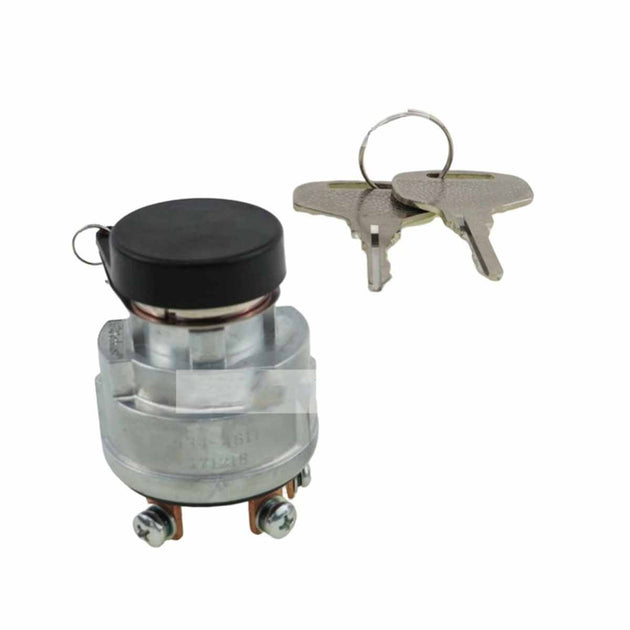Filter and sort
Replacement Ignition Switches & Starter Key Switches
Restore the starting reliability and electrical integrity of your machinery with high-quality replacement ignition switches. As the primary interface for activating your engine’s electrical system, a precision-engineered starter switch is essential for ensuring smooth power distribution and preventing accidental engine cut-outs. BeeSpareParts offers a professional selection of aftermarket ignition units suitable for heavy-duty equipment, providing a reliable replacement for multi-position key switches and heavy-duty starter assemblies.
Our extensive inventory is precision-built to handle high-current loads and feature corrosion-resistant terminals for long-term durability in dusty and high-vibration environments. Every unit is designed with a heavy-duty internal mechanism to provide a crisp, tactile response and secure locking. Whether you are repairing an excavator, a forklift, or an agricultural tractor, our durable ignition switches ensure your machinery delivers peak responsiveness and maximum security on every job site.
Fits for:
-
Engine & Switch Series: 12V/24V systems, 4-position switches, 6-wire configurations, 4BT, 6BT, 4D95, 6D102, S6K, WP6.
-
Equipment Models: ZX, PC, SK, EC, EX series excavators, backhoes, loaders, and industrial power units.
-


Ignition Switch 36884211 for Ingersoll Rand Air Compressor
Regular price $ 97 -


Ignition Switch Module w/2 Keys AM119999 AM124137 For John Deere 325 335 345
Regular price $ 92 -


Ignition Switch 02250132-883 02250132883 Compatible for Sullair Air Compressor
Regular price $ 90 -


Ignition Switch With 2 Keys 27005-0036 for Kawasaki Teryx4 & Teryx 750 800
Regular price $ 28 -


Ignition Switch 434-4611 4344611 For Caterpillar Engine C1.1
Regular price $ 88 -


Ignition Switch 4700932050 for Dynapac Roller CA250D CA500D CC422 CC522 CC622
Regular price $ 98 -


Starting Ignition Switch 701/80184 701/45500 for JCB 8014 8018 803 PLUS
Regular price $ 25 -

TC020-31820 TC020-31822 35260-31852 Ignition Switch Ignition Lock w/ Keys for Kubota Tractor L2501D L2501F L2501H L2600DT L2600F
Regular price $ 49 -


TX10953 Ignition Switch for 4158641 Fiat Universal Long Tractor Allis Chalmers 87569357 Ford New Holland
Regular price $ 35 -

YN50S00002F1 Ignition Switch W 2 KEYS For Kobelco SK200-6E Excavator
Regular price $ 29 -

Truck Forklift Ignition Switch 28526100 for Jungheinrich Forklift
Regular price $ 29 -

Starter Switch DX225 Ignition switch K1001654B with key F900
Regular price $ 35



















